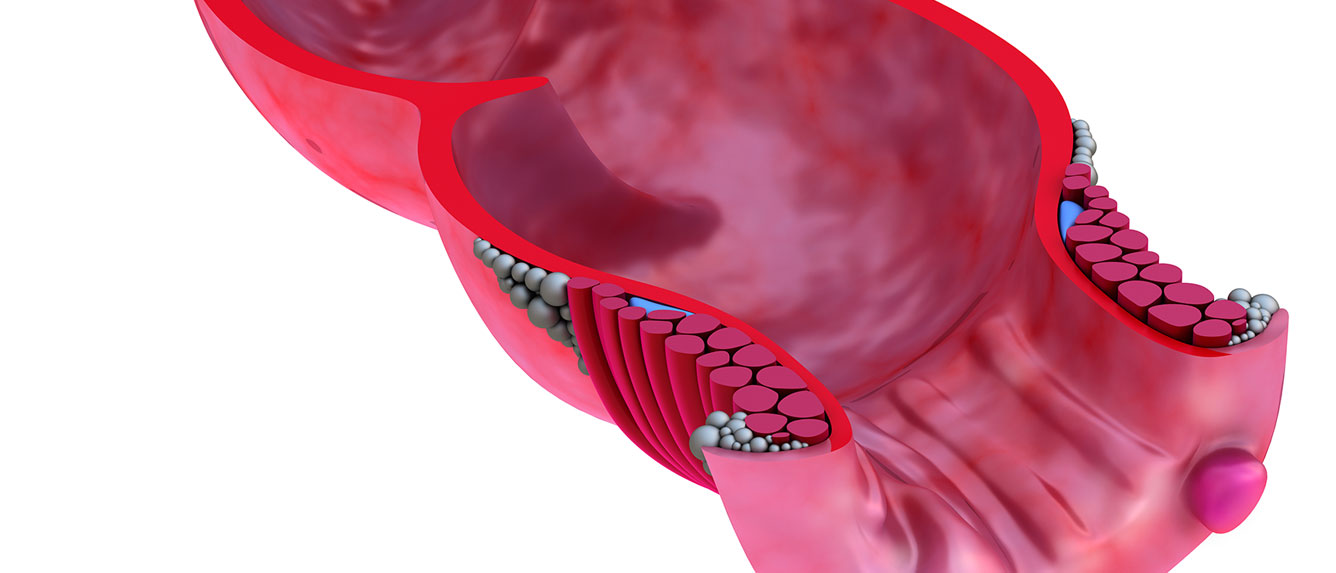What is an Anal Fistula?
A fistula is an abnormal connection between two body surfaces. An anal fistula is an abnormal connection between either the anal canal (the inside of the anus) or rectum, with the skin around the anus.
An anal fistula is an abnormal connection or tract between the anal canal (the inside of the anus) to the skin around the anus.
Anal fistula usually occurs as a result of a previous perianal abscess.
An anal fistula, almost always the result of a previous abscess, is a small tunnel connecting the anal gland from which the abscess arose to the skin of the buttocks outside the anus.
What causes a Fistula?
An anal fistula usually starts because a gland in the anus becomes blocked and infected. Instead of the infection breaking through back into the anus, it breaks through to the skin next to the anus and thus creates a tunnel. As long as the internal opening does not close up, the fistula usually do not heal.
An anal fistula may also follow after an abscess that has been drained. This could be that at the time of the abscess, there was already an opening to the inside of the anal canal from the abscess but was not evident at the time of surgery for the drainage of the abscess. This manifests itself as persistent draining of pus from the wound of the incision and drainage, and that the wound would not close completely.
What are the symptoms of an Anal Fistula?
Some fistulas start as a small pimple around the anus. This bursts and some pus and / or blood is discharged out. It then heals, but after a period of time, the pimple can form and burst again.
Another way that the fistula may manifest would be after an abscess has been drained. The wound heals nicely initially, but even after a long time, does not close completely. In some cases, the skin heals, but soon has a swelling under the scar, and then pus comes out when the point in the scar burst.
Diagnosis of a Fistula
Most of the time, a history of repeated swelling and discharge can point towards the diagnosis of the abscess, and examination of the area may even reveal the presence of the tract that leads from the skin into the anus.
For some complex fistula, additional imaging such as endoanal ultrasound (by putting a small ultrasound probe into the anus) or magnetic resonance imaging (MRI) may be required to see the entire length of the fistula tract.
Treatment for a Fistula
Surgery is almost always necessary to cure an anal fistula.
The most straightforward fistula surgery is lay open fistulotomy. This entails cutting a small portion of the anal sphincter muscle to open up the entire tunnel, which will then heal from inwards to outwa
For the deeper tracts, cutting open the muscle is not suitable as this would likely lead to incontinence. Some methods of treatment would include
- Ligation of Intersphincteric Fistula Tract (LIFT) – this entails locating the tract between the 2 layer of muscle, and separating and tying off the 2 ends of the tract.
- Fistula plug – this uses a prosthetic material that fills up the entire tract and allow new tissues to grow into the tract to replace the material.
- Fibrin glue – this uses a “glue” to seal up the tunnel Seton – a seton is a stitch (suture) that is placed around the tract. This allows the pus in the tract to come out along the seton, while at the same time, the seton slowly cuts through the muscle below and allows the muscle above it to heal. A second operation may then be required to cut through the rest of the muscles once it is safe enough to do so without risks of incontinence.
- Video Assisted Anal Fistula Treatment (VAAFT) – this is one of the latest techniques available for treatment of complex fistulas. It allows the surgeon to put a video scope through the opening to look at the entire tract and follow it to the opening on the inside. The opening on the inside is then closed, and the tract is cleaned out using the brush and a probe through the video scope. This has an added benefit that there will be no long cut over the skin.
Although fistula surgery is usually relatively straightforward, the potential for complication exists, and is preferably performed by a specialist in colon and rectal surgery. This operation needs to be done with care, as cutting too much muscle will lead to loss of control of bowel movement. Most of the time, fistula surgery can be performed on an outpatient basis – or with a short hospital stay.
Post-Op Care
Most patients can be discharged the same or next day after surgery. Discomfort after surgery can be mild to moderate for the first week and can controlled with pain pills.
The follow up care for each type of surgery differs. Lay open fistulotomy requires may require daily wound cleaning at the clinic. After care for VAAFT and LIFT tends to be easier with just daily washing or flushing of the wound with a syringe.
For fibrin glue and fistula plug, minimal wound care is required.
What are the chances of a recurrence of an Abscess or Fistula?
If properly healed, the problem will usually not return. However, it is important to follow the directions of your doctor to prevent recurrence.


